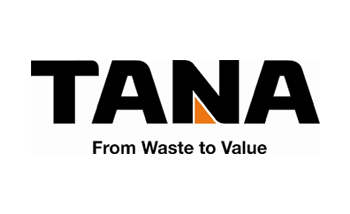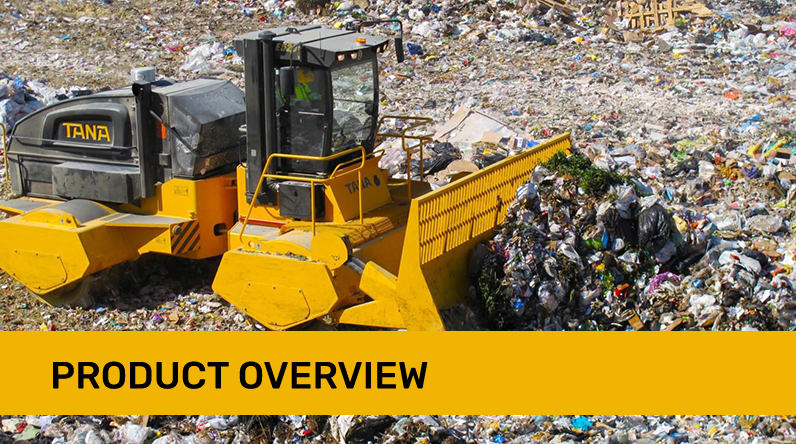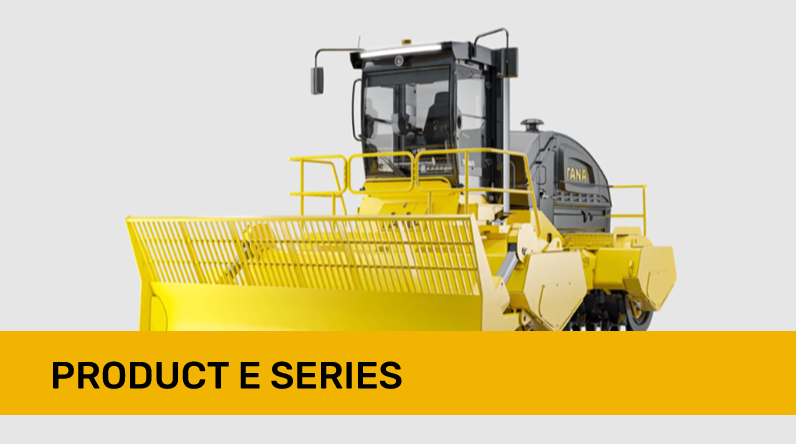ABOUT TANA
Tana Oy has recognized the environmental influence during the lifespan of its highly innovative environmental technology products. We emphasize highly on minimizing the harmful environmental effects of our products both when it comes to the production process as well as the life time at the end user’s. Tana focuses on the environmental friendliness of the products, their recyclability and the economical savings caused by these in designing, producing, distributing and operating Tana machinery.
Tana Oy operates in accordance with several quality and environmental standards and has complied to these. In addition Tana has its own tailor-made environmental policy and programme.
TANA Compaction Methodology
Let’s look at some waste compaction theory first. Compaction is based on the following factors:

Machine weight influences on how deep the compaction goes. There are not many studies conducted regarding the weight distribution and effect on compaction. However, a bigger machine can handle more capacity and reach wanted compaction rate faster. When comparing the compaction within the same weight class as Tana the costs are lowest in kg per m3
Drum or wheel diameter: Big diameter of the drum means covering a larger area of the top surface which causes the machine to float on top of the waste. As the pan area only causes high top surface compaction, the four-wheeler needs to create a lot smaller compaction layer to achieve the same compaction level as the Tana full-width drum. Smaller Tana compaction wheel diameter maximizes the machine ground pressure and maximized sinking of the machine. Sinking will cause the material to compact! Tana has conducted studies about the right compaction drum diameter over the past 40 years and found the right size to perform compaction on elastic materials such as MSW, plastics, mixed waste, etc.
The incoming waste type also has an effect on the final kg/m3. In some countries like Northern and Western Europe the waste is typically pretreated; e.g. the amount of organic material is minimized. In others like USA and Australia or some Asian countries the amount of organic waste can be extremely high. This obviously will have effect on what kind of compaction rate can be achieved. In any case TANA guarantees a minimum of 10 % better compaction rate.
The amount of incoming waste. If we simplify a lot it is possible to compact waste with any machine as long as the time spent does not matter. But because turnaround time is important and the incoming waste flow is constant it is necessary to achieve the highest compaction rate as quickly as possible with as few passes and low costs as possible. The weight of the machine in relation to the amount of waste, number of crushing teeth and the drum design are significant factors affecting this. The bigger the amount of incoming waste the better results Tana will achieve against any four-wheeled machine. Tana can compact a thicker layer and achieve a minimum of 10 % higher compaction rate faster than others.



